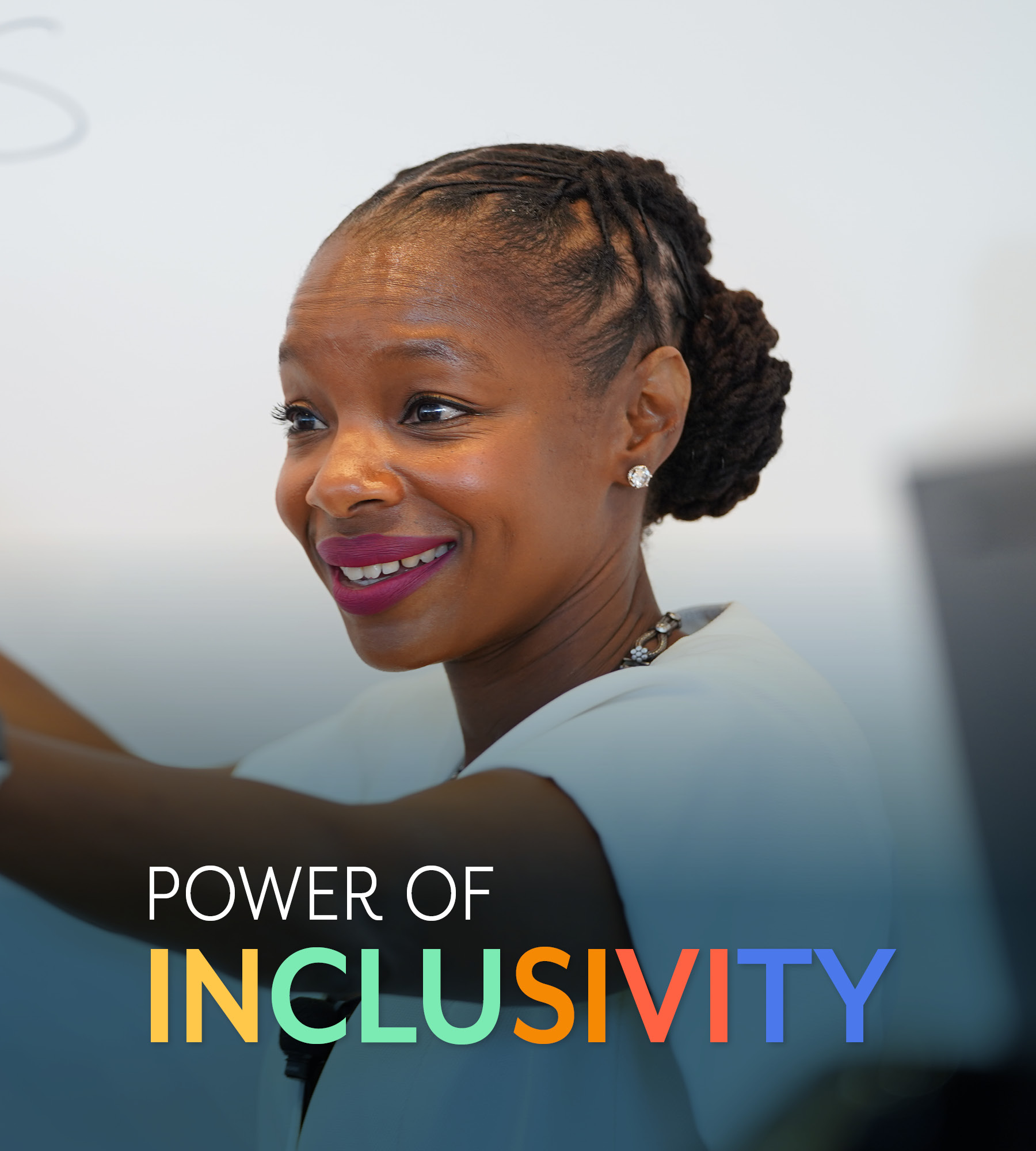Language
You can read the magazine in one of the following languages
Geolocation
You can read the global content or the content from your region

The richness of an organization’s experience comes down to its people. In a world where even new startups can boast ‘combined decades of experience’, it’s best to make sure that experience is as varied and valuable as possible.
To appropriately create a deep pool of talent is a matter of attracting people from all sorts of backgrounds. With diversity comes experience, as well as the agility to navigate the ever-changing dynamics of business. The alternative? Stand still and stagnate.
“There is robust research showing that organizations experience the benefits of diversity when they recruit and retain people from underrepresented identity groups, and tap into their experiences and knowledge in a way that teaches the organization how to do its work better,” says Modupe Akinola, Barbara and David Zalaznick Professor of Business at Columbia Business School and an authority on organizational performance, stress and diversity.

“For me, success entails having clarity on problems you were put on this earth to solve, pursuing solutions to these problems with fervor and finding moments of joy as you experience the ups and downs of the journey.”
“By valuing different perspectives and being inclusive of many voices, organizations adopting this approach encourage employees to reimagine how work gets done, which can then help the organization achieve its goals.”
While the benefits of diversity are clear, the path to change is often paved with resistance, Akinola says.
“Typically, resistance occurs because people are experiencing efforts as threatening,” she says. “That could be a fear that the majority group will lose resources or status, that acknowledging the presence of bias, discrimination and inequality can make people feel their own successes are invalid, or that their moral image is threatened by being linked to an unfair system that may have given them the upper hand.”
Once the source of resistance has been identified, the next step is figuring out how to address it. That’s never easy, but Akinola says it has been proven time and again that whatever the course of action, it’s always in the best interests of the company.
“Having a diverse workforce and fostering a climate of inclusion can help organizations see the world through multiple lenses,” she says. “From there they can adopt a posture of continuous learning; both are critical ingredients for facing an uncertain future.”
Akinola will share her thoughts on how businesses can grow and drive productivity through diversity when she takes the stage at the World Business Forum in Sydney in October.
She’ll join other expert voices from the business world, including former Saatchi & Saatchi boss Kevin Roberts, social psychologist Amy Cuddy and film director James Cameron.

“Working with the World Business Forum means seizing the opportunity to shape the perspectives of senior leaders, who touch the lives of so many, around stress and diversity,” says Akinola, who advises leaders on managing stress in the workplace.
“The impact is exponential, and means more individuals in workplaces around the globe have the potential to live happier and healthier lives where they feel included, valued and respected in their organizations.”
The fact improving inclusivity and vanquishing stress go hand in hand should come as no surprise, but businesses can often be blindsided by the variety of sources – and nature – of stress in the workplace.
“Time pressure, deadlines, the inability to disconnect, poor leadership and unfair systems and processes can be as stress-inducing as traditional business hierarchies,” Akinola says. “It therefore becomes important for organizations to identify the sources of stress that are most prevalent in the specific culture and find practices and structures to reduce it.”
Whatever the cause, stress can be hard for the individual to navigate – and even harder for the business to manage. Akinola says negotiation of stress comes down to assessing each stressor on an individual basis.
“You can’t control market dynamics if a member of your team falls ill, or there is an erratic boss or client. What you can control and negotiate is how you approach, manage and cope with the stressor,” she says.
At the same time, stress can also be an opportunity to learn and to grow.
“Not all stress is bad. It can enhance your ability to navigate stressful situations,” she says.
“Ask yourself: ‘What stressors have I experienced in the past month? The past year? Your life more broadly?’ Then probe deeper: ‘What did I learn from the experience?’ Your responses to these questions perfectly capture the opportunities afforded by stress.”

“By valuing different perspectives and being inclusive of many voices, organizations adopting this approach encourage employees to reimagine how work gets done.”
This self-analysis leads to the kind of clarity Akinola believes is at the heart of professional success.
“For me, success entails having clarity on problems you were put on this earth to solve, pursuing solutions to these problems with fervor and finding moments of joy as you experience the ups and downs of the journey.”
The purpose of that journey is also crucial to keep front of mind, she adds.
“One of my favorite quotes is by Friedrich Nietzsche, who once said, ‘He who has a why to live can bear almost any how’. To attract and keep top talent, leaders need to help employees understand the big picture, the aspirational vision the organization aspires to and the role each person plays in achieving that vision,” she says.
“Leaders also need to understand and mentor talent, exposing them to growth opportunities that motivate them. It’s also critical for leaders to model ethical behavior so that employees feel like they trust, respect and want to authentically emulate the behaviors of those at the top.”